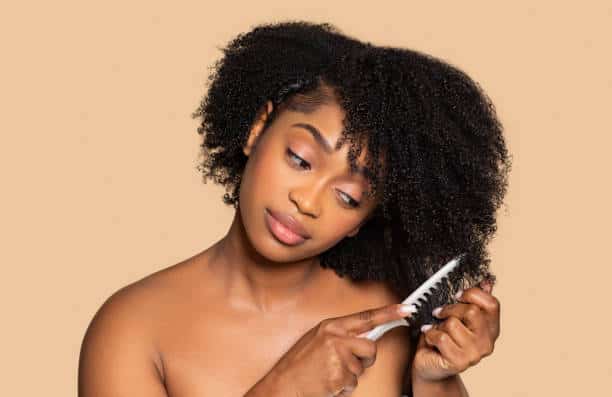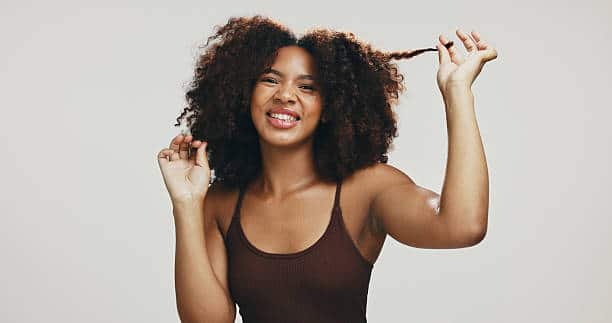
Your hair, like everything else on your body, can change over time for many different reasons. Even with the best care and maintenance routine, there are external and internal factors that can influence how your hair grows, its curl pattern, and even its texture. Understanding these influences can help you better care for your hair as it evolves through different stages of life.
1. Hormones
Hormones are one of the most common and powerful reasons your hair texture might change. The chemical messengers that regulate nearly every function in your body also play a direct role in how your hair grows, sheds, and feels.
A major hormonal shift typically occurs during pregnancy. Many women notice that their hair becomes thicker, shinier, and appears to grow faster during this time. While prenatal vitamins often get the credit, the real reason behind this change is the surge in estrogen levels. Elevated estrogen slows the hair’s natural shedding cycle, which means you retain more hair for a longer period, creating the illusion of extra thickness and volume.
However, this temporary boost doesn’t last forever. After pregnancy, as hormone levels normalize, many women experience a period of shedding—sometimes referred to as postpartum hair loss. Though alarming, this process is completely natural and typically resolves on its own.
Hormonal imbalances unrelated to pregnancy can also impact your hair. A thyroid disorder, for example, can lead to noticeable changes. According to trichologist Elizabeth Cunnane Phillips, a thyroid imbalance can cause hair to “appear coarser, feel drier, and become more brittle.” Other hormones, such as insulin, androgen, and thyroxine/triiodothyronine, also play important roles. When they fluctuate, you may notice increased hair loss, thinning, or dryness.
Essentially, if your hormones are out of balance, your hair is likely to show it. Addressing the root hormonal issue—often with medical guidance—is the most effective way to restore your hair’s health and natural texture.

2. Health & Diet
Your hair is a reflection of your overall health. Just as poor nutrition can affect your skin, weight, and energy levels, it also influences the quality, strength, and texture of your hair. A diet lacking in essential nutrients can cause hair to become dull, brittle, or thin.
Your hair follicles rely on a steady supply of vitamins and minerals to produce strong strands. Key nutrients include zinc, biotin, iron, vitamin E, and omega fatty acids. These nutrients promote healthy scalp function, boost hair growth, and help retain moisture in each strand. Some excellent food sources include:
-
Salmon and other fatty fish – packed with omega-3 fatty acids and protein
-
Eggs – rich in biotin and essential amino acids
-
Avocados – full of healthy fats and vitamin E
-
Oysters – one of the best natural sources of zinc
-
Dark leafy greens like kale and spinach – loaded with iron and antioxidants
If your diet consists primarily of processed foods, sugary snacks, and alcohol—sometimes humorously called a “champagne diet”—your hair may pay the price. Over time, nutrient deficiencies can lead to hair that’s dry, weak, and more prone to breakage.
Hydration is also essential. Since your hair shaft is made up of about 25 percent water, dehydration can cause strands to feel rough and brittle. Pairing a balanced diet with plenty of water will not only improve your hair’s health but also benefit your skin and overall energy levels.
RELATED: How to Keep Your Low Porosity Hair Moisturized and Healthy
3. Aging
It’s no secret that aging brings changes to your skin and body—but your hair also evolves as the years pass. As we age, the sebaceous glands on our scalp become less active, producing less sebum (natural oil). This decrease in oil production can make the hair feel drier, coarser, or more brittle.
In addition to texture changes, many people notice a gradual thinning of their hair. This isn’t necessarily due to fewer hair follicles but rather a reduction in the diameter of each strand. “Generally speaking, each follicle is still producing a hair, but the diameter of each individual hair can marginally decrease over each growth cycle,” explains Phillips. This means that while you might have the same number of hairs, each one is slightly finer, giving the overall appearance of thinner hair.
Genetics also play a role in how your hair changes with age. Some people may maintain thick hair well into their senior years, while others experience early thinning. Gray hair, another natural part of aging, can also feel more wiry or coarse due to reduced melanin and moisture content.
The best defense against age-related hair changes is gentle care—regular conditioning, minimal heat styling, and protecting the scalp from excessive sun exposure. Using products designed for mature hair can also help replenish lost moisture and improve manageability.
4. Medication
Certain medications can have side effects that impact your hair’s texture, thickness, or growth rate. Drugs that influence hormone levels—such as birth control pills, thyroid medications, and hormone replacement therapies—can cause hair to feel unusually dry, brittle, or thin. In some cases, they can even trigger temporary hair loss.
Chemotherapy and other cancer treatments, for example, can drastically affect hair follicles, often leading to hair loss or regrowth with a completely different texture afterward. While most medication-related hair changes are temporary, it’s always a good idea to discuss any noticeable shifts with your healthcare provider. They may be able to adjust your dosage or suggest ways to support your hair during treatment.

RELATED: 10 Ways Black Women Can Grow Thick, Long Hair
5. Over-Styling
Finally, one of the most common and preventable causes of hair texture change is over-styling. Excessive use of flat irons, curling wands, blow dryers, and chemical treatments can permanently alter your hair’s natural structure. Heat breaks down the protein bonds (keratin) in your strands, which can change the curl pattern or make your hair appear limp and lifeless.
If you straighten your hair frequently—even if you’re naturally curly—you may start to notice your curl pattern loosening over time. This phenomenon, sometimes called “heat training,” is actually a form of damage. Unfortunately, once this damage occurs, it’s not reversible. The only way to restore your natural texture is to trim off the affected sections and let new, healthy hair grow in.
To prevent this, try limiting heat styling to once a week or less, always use a heat protectant spray, and give your hair regular breaks from tight hairstyles or chemical treatments. Embracing your natural texture and using products suited to your hair type can help preserve its integrity in the long run.
Final Thoughts
Your hair’s texture, curl pattern, and thickness are not static—they evolve just like the rest of your body. From hormonal changes and nutrition to aging and styling habits, many factors influence how your hair looks and feels over time. The good news? By understanding these influences and making small, mindful adjustments to your routine, you can keep your hair healthy, resilient, and beautiful at every stage of life.
For more hair info, visit KissTheChaos.com and follow me on Instagram: @Ooolala_laa








